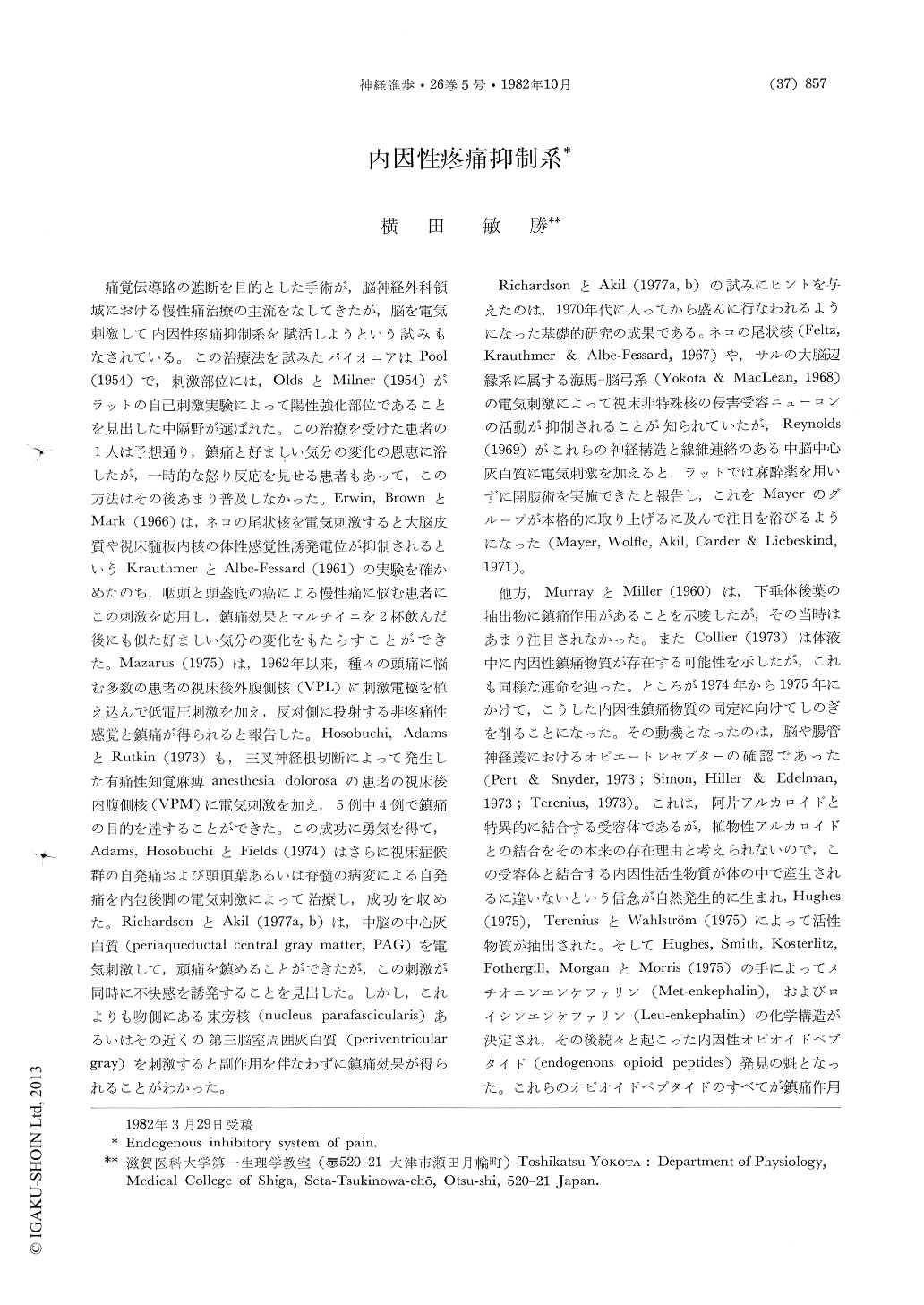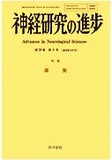Japanese
English
- 有料閲覧
- Abstract 文献概要
- 1ページ目 Look Inside
痛覚伝導路の遮断を目的とした手術が,脳神経外科領域における慢性痛治療の主流をなしてきたが,脳を電気刺激して内因性疼痛抑制系を賦活しようという試みもなされている。この治療法を試みたパイオニアはPool(1954)で,刺激部位には,OldsとMilner(1954)がラットの自己刺激実験によって陽性強化部位であることを見出した中隔野が選ばれた。この治療を受けた患者の1人は予想通り,鎮痛と好ましい気分の変化の恩恵に浴したが,一時的な怒り反応を見せる患者もあって,この方法はその後あまり普及しなかった。Erwin,BrownとMark(1966)は,ネコの尾状核を電気刺激すると大脳皮質や視床髄板内核の体性感覚性誘発電位が抑制されるというKrauthmerとAlbc-Fessard(1961)の実験を確かめたのち,咽頭と頭蓋底の癌による慢性痛に悩む患者にこの刺激を応用し,鎮痛効果とマルチイニを2杯飲んだ後にも似た好ましい気分の変化をもたらすことができた。Mazarus(1975)は,1962年以来,種々の頭痛に悩む多数の患者の視床後外腹側核(VPL)に刺激電極を植え込んで低電圧刺激を加え,反対側に投射する非疼痛性感覚と鎮痛が得られると報告した。
It is now well established that profound analgesia can be elicited by electrical stimulation of brain sites. This phenomenon, commonly referred to as stimulation produced analgesia (SPA) is more than a laboratory curiosity; The relief of intractable pain in humans could actually be obtained by electrical stimulation of brain sites, such as the periventricular gray. Furthermore, it has been suggested that SPA and opiate analgesia (OA) operate by a common mechanism.
The effective sites for SPA and OA by intracerebral microinjection overlap considerably.

Copyright © 1982, Igaku-Shoin Ltd. All rights reserved.


